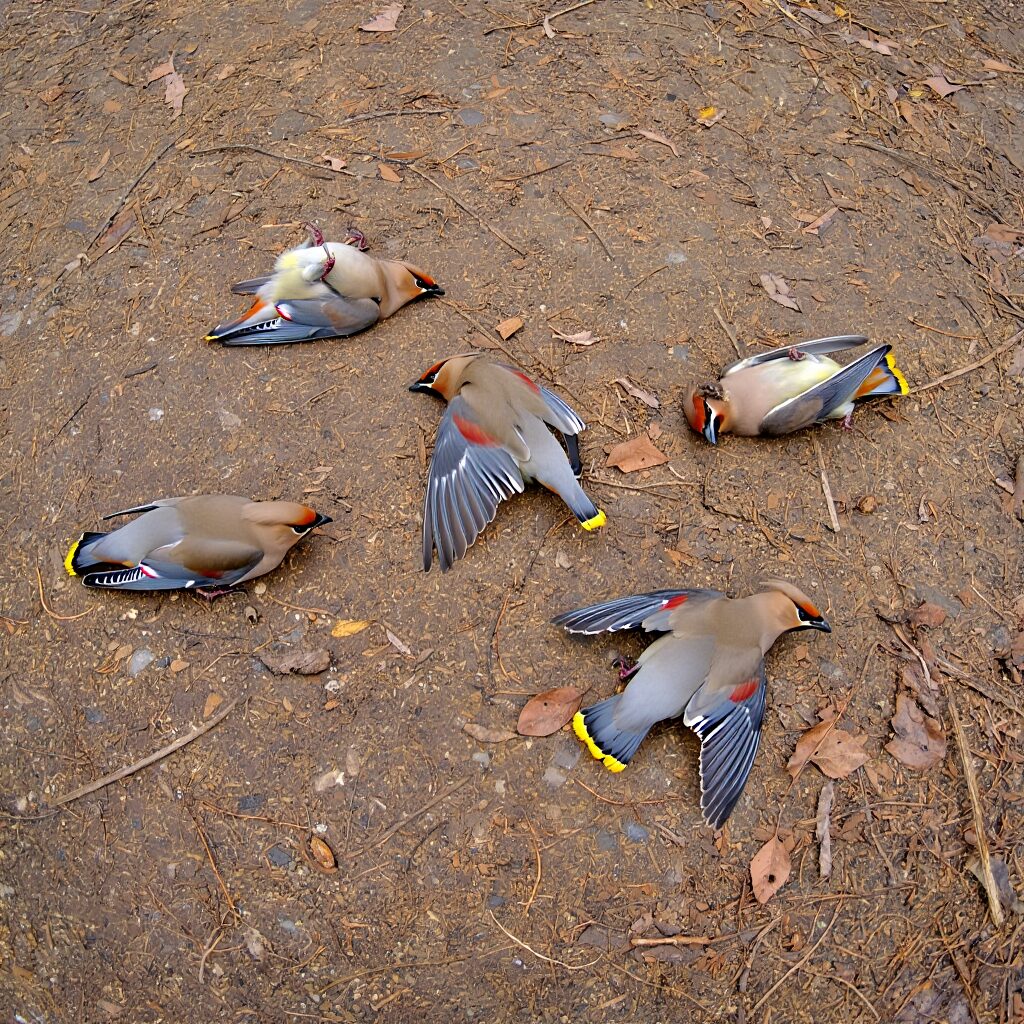This bird wears a velvet crest, whispers in icy air, and sometimes lies motionless on the snow — not dead, just drunk.
The Bohemian Waxwing (Bombycilla garrulus) is a stunning winter nomad of the far north, cloaked in silky gray-brown plumage with rose-tinted undertones. Its sharp black mask, cinnamon face, and dramatic crest give it the air of a dignified traveler — mysterious, precise, and oddly serene. And yet, beneath that polished appearance lies a wild appetite for pleasure.
Found across the boreal forests of Europe, Asia, and North America, Bohemian Waxwings travel in shifting flocks, roaming vast distances in search of fruit. They don’t hold territories or sing to defend nests — instead, they wander like pilgrims, feeding, chattering, and glittering through the winter skies.
Their favorite meals? Berries. Lots of them. Rowan, juniper, crabapple, hawthorn — whatever they can find. These birds gorge themselves to survive the cold. But in late winter, nature plays a trick: fruits left too long on trees begin to ferment, producing alcohol.’
The waxwings don’t know restraint. They feast until they wobble. Some lose balance and fall from branches. Others flutter to the ground, dazed and staggering. To the casual observer, they might look like casualties of the cold — but they’re not dead. They’re simply drunk.
Some rest, recover, and fly again. Others, unfortunately, collide with windows or cars in their stupor. In parts of Canada and Scandinavia, wildlife rehab centers even care for intoxicated waxwings during berry season — placing them in dark boxes to sober up gently before release.
Still, it’s hard not to admire their boldness. In a season defined by scarcity and survival, the Bohemian Waxwing continues to chase sweetness — even if it comes with risk. It lives on the edge of winter and indulgence, beauty and absurdity.
Gleaming. Gluttonous. Gloriously alive.
Not dead — just delighting in the fruit.
